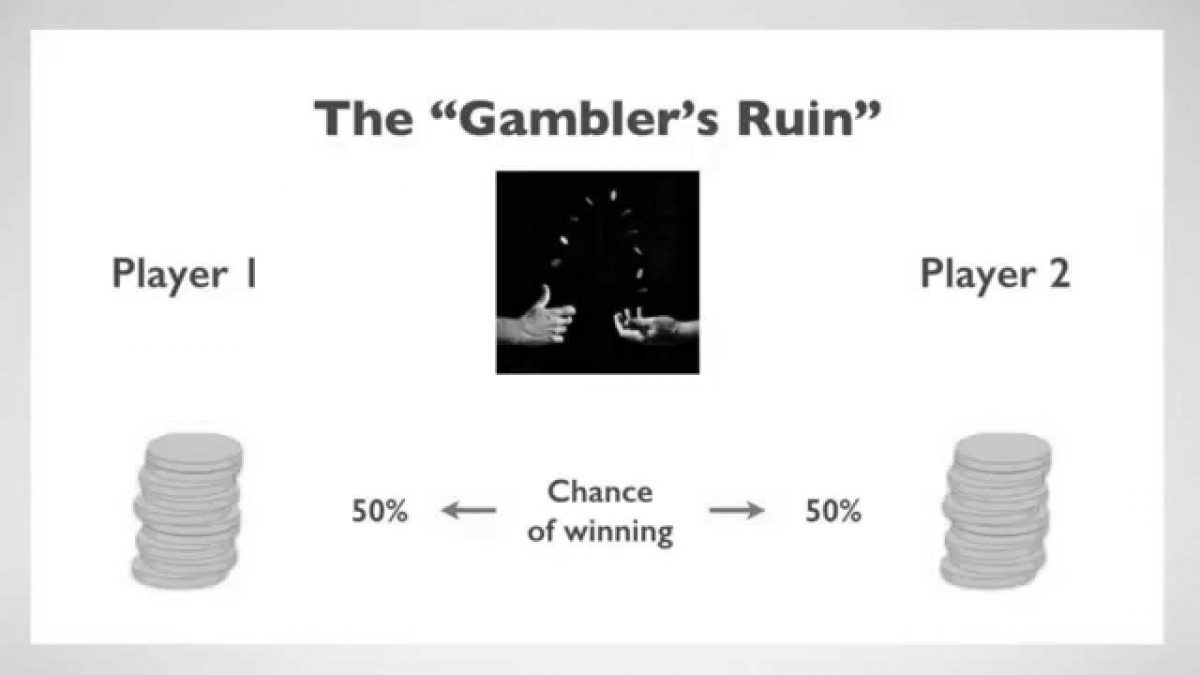Introduction
The Gambler’s Ruin is a mental model that explores the fallacy of believing in a winning streak or an eventual reversal of fortunes. It refers to the tendency of individuals to continue gambling or taking risks based on the expectation that they will eventually overcome losses or achieve a positive outcome. This model is anchored in human psychology and prevalent in our decision-making processes. By understanding the Gambler’s Ruin and its implications, we can avoid making irrational decisions that go against our best interests.
The Relevance of the Gambler’s Ruin in Decision-Making
The Gambler’s Ruin holds significant relevance in decision-making, as it affects our perception of risk and potential rewards. It arises from the belief that a losing streak will eventually turn around or that a streak of wins will continue indefinitely. This fallacy impacts various aspects of our lives, including personal choices, business scenarios, and public policy-making.
- Personal Life Decisions: Consider an individual gambling at a casino and experiencing a series of losses. The Gambler’s Ruin fallacy may lead them to continue gambling with the expectation of recovering their losses. This mindset can result in severe financial consequences and emotional distress as they chase their losses instead of making rational choices based on probabilities.
- Business Scenarios: In business, the Gambler’s Ruin fallacy can manifest in investment decisions. For example, a company may experience a decline in profits but continue to invest more resources in the hope of a sudden turnaround. This flawed thinking ignores the underlying reasons for the decline and may lead to further losses and financial instability.
- Public Policy-Making: The Gambler’s Ruin fallacy can also influence public policy-making. For instance, governments may persist with failing policies or interventions, believing that continued efforts will eventually yield positive results. This persistence may overlook the need for critical evaluation and adaptation, resulting in wasteful spending and ineffective outcomes.
The Influence of Mental Biases on the Gambler’s Ruin
Several cognitive biases contribute to the Gambler’s Ruin fallacy and its prevalence in decision-making:
- Availability Bias: The availability bias leads individuals to base their judgments on readily available examples or instances that come to mind. In the context of the Gambler’s Ruin, people may recall stories or anecdotes of individuals who had successful comebacks after a losing streak, disregarding the statistical probabilities and overlooking the many more instances where the ruin occurs.
- Overconfidence Bias: The overconfidence bias influences individuals to have unwarranted confidence in their abilities or in positive outcomes. In the Gambler’s Ruin, this bias may lead individuals to believe that their skills or strategies will ultimately overcome the odds, underestimating the inherent risks and uncertainties involved.
- Confirmation Bias: The confirmation bias prompts individuals to seek information or experiences that confirm their preexisting beliefs or expectations. In the Gambler’s Ruin, individuals may selectively focus on wins or positive outcomes while disregarding losses or negative outcomes, reinforcing the illusion of an impending reversal of fortune.
Strategies for Avoiding the Gambler’s Ruin Fallacy
To avoid succumbing to the Gambler’s Ruin fallacy and making irrational decisions, consider the following strategies
- Embrace Probability and Risk Assessment: Understand the concept of probability and evaluate risks objectively. Acknowledge that each decision or gamble is independent of previous outcomes and assess the probabilities and potential risks realistically.
- Set Limits and Stick to a Plan: Establish predetermined limits and guidelines for decision-making. This includes defining acceptable levels of risk and allocating resources accordingly. Stick to your plan even in the face of short-term losses or wins to maintain a disciplined approach.
- Seek Diverse Perspectives and Expert Advice: Seek out diverse perspectives and expert opinions to gain a more comprehensive understanding of the situation. Engage with individuals who can provide objective insights and challenge your assumptions to avoid the trap of biased thinking.
- Practice Self-Awareness and Reflection: Regularly reflect on your decision-making patterns and biases. Develop self-awareness to recognize when you may be falling into the Gambler’s Ruin fallacy. Pause, reassess your assumptions, and consider the potential long-term consequences of your actions.
Conclusion
The Gambler’s Ruin fallacy can have significant repercussions on decision-making, leading individuals and organizations to make irrational choices against their best interests. By understanding the underlying biases and psychological factors at play, we can avoid falling into this mental trap. Embracing probability, setting limits, seeking diverse perspectives, and practicing self-awareness empower us to make more informed and rational decisions. Awareness of the Gambler’s Ruin fallacy and its implications is key to avoiding the detrimental effects of irrational decision-making and striving for more favorable outcomes.
